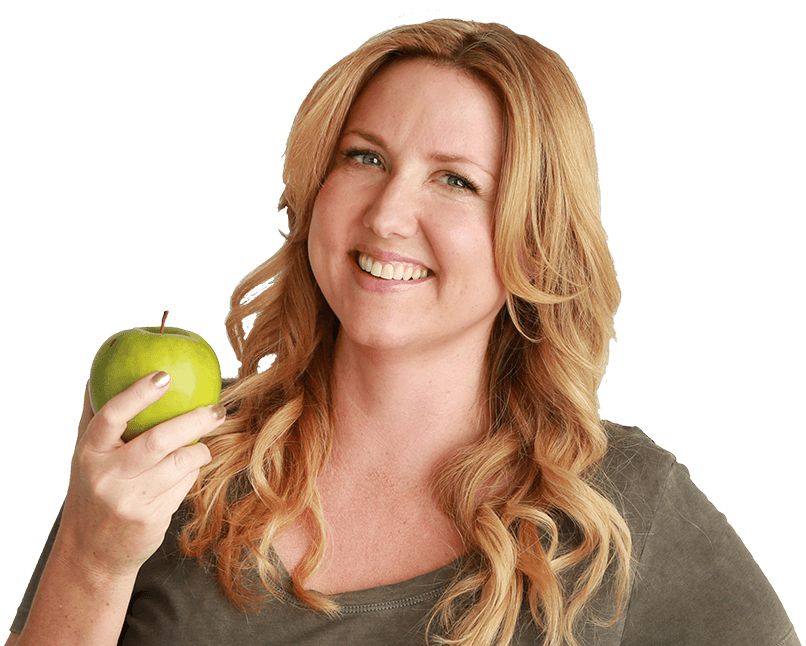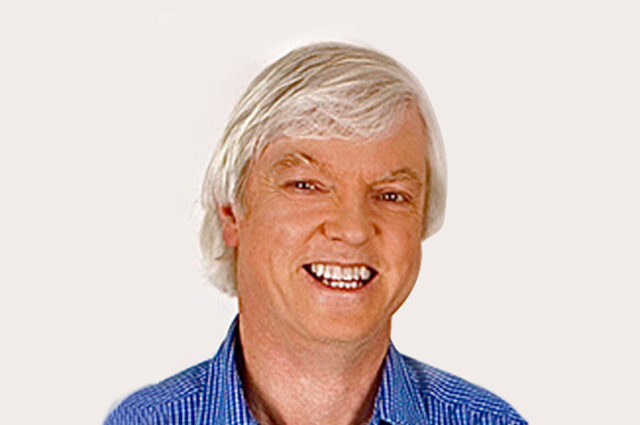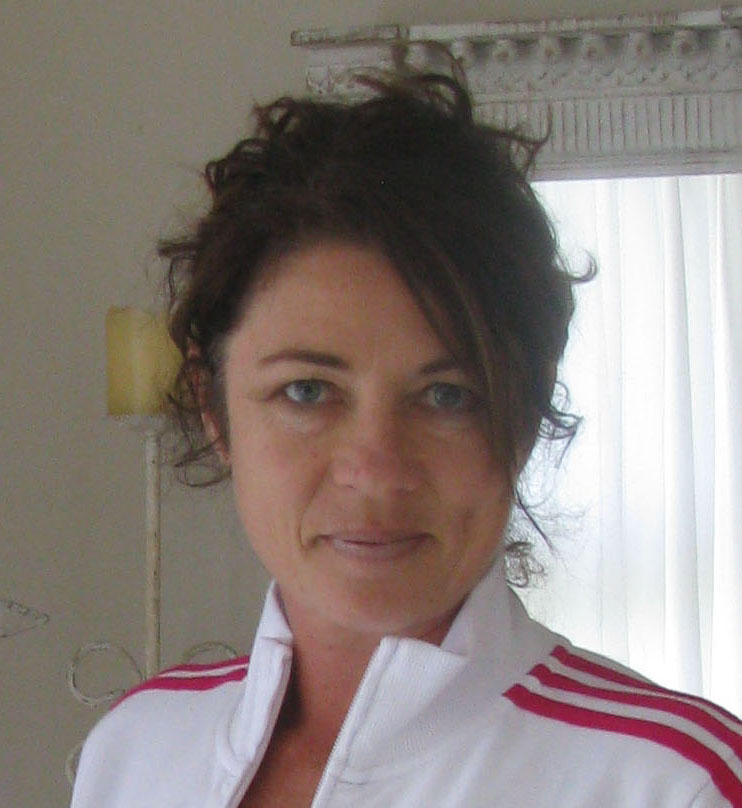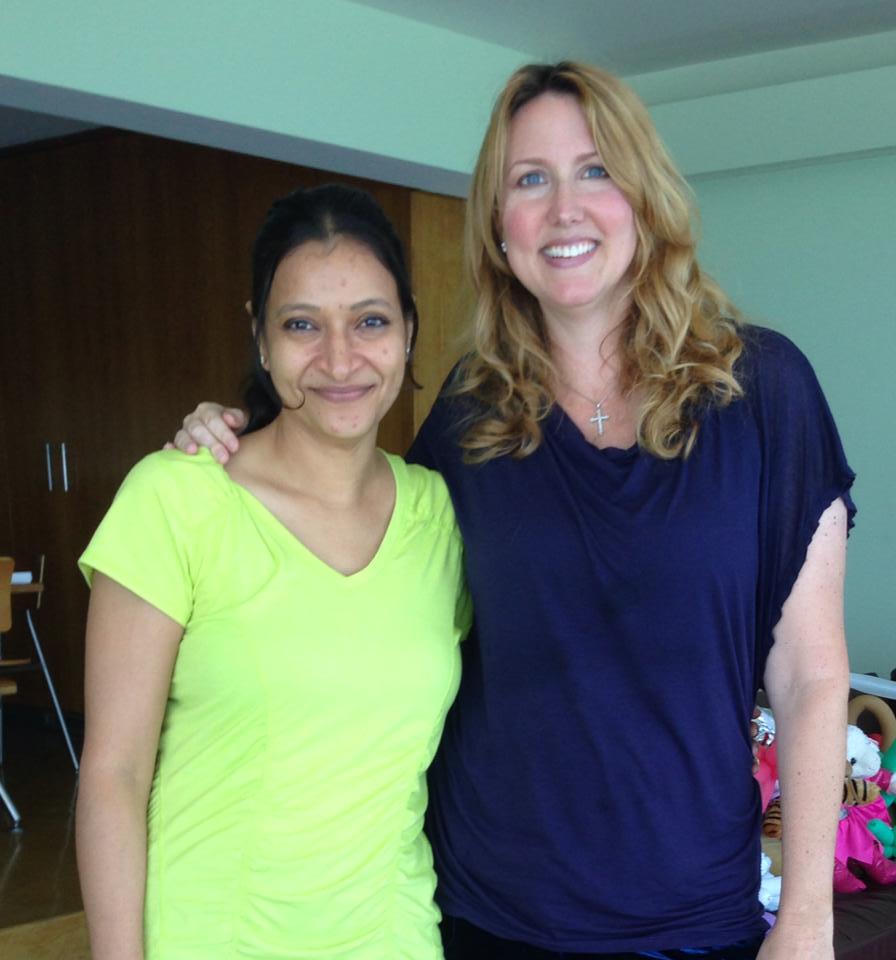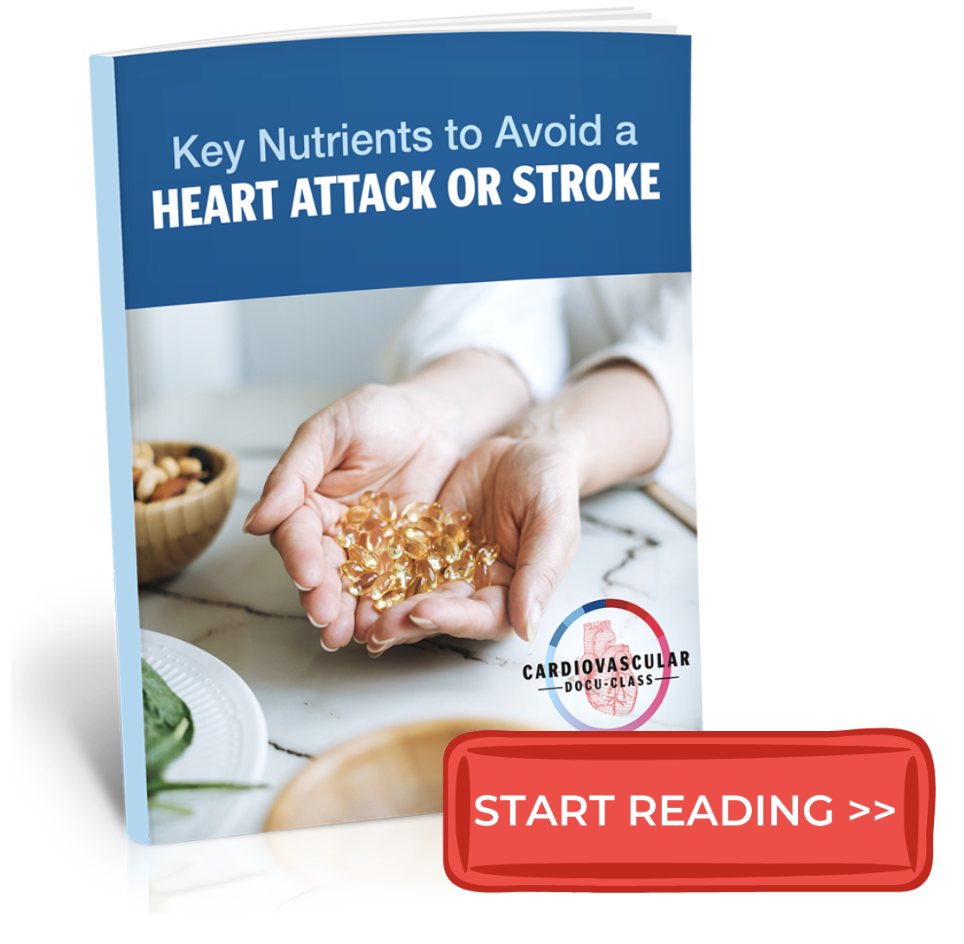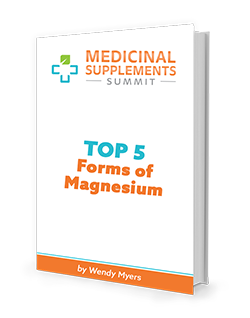Listen
Listen to this podcast or watch the video. CLICK HERE
Transcript
- 02:20 About Dr. Bruce Jones
- 09:41 Heavy Metal Toxicities and their Effects
- 14:44 Tin and Thallium Toxicity
- 23:56 Looking at Thallium Ratios on an HTMA
- 25:34 Tests for Heavy Metals
- 26:34 DMSA Challenge Test
- 31:49 Do All Heavy Metals Come Out on a Hair Mineral Analysis?
- 36:29 Stool Metals Test
- 38:04 What Silver Does to the Body
- 38:48 Urine Metals Push Test
- 45:34 Problems with Doing Urine Metals Push Tests with only DMSA
- 47:47 Problems with extended Chelation with DMSA
- 53:15 Diabetics and Fecal Metals Test
- 55:44 Wendy’s Upcoming Safe Supplement Summit
- 57:35 The Most Pressing Issue in the World Today: Toxicity
- 61:17 More About Dr. Jones
Wendy Myers: Hello. Welcome to the Live To 110 Podcast. My name is Wendy Myers and you can find me at myersdetox.com and you can find the NewMineralPower.com very soon. That’s having whole new brands with a new website design. That is my healing and detox program that I use to help reverse my clients’ health conditions and detoxing of heavy metals.
That’s what we’re talking about today on the show with a very good friend of mine, Dr. Bruce Jones who is a mentor of mine. And he’s going to be talking about heavy metal urine push tests and how they are great adjunct to hair mineral analysis screening test for heavy metals.
And please keep in mind that this program is not intended to diagnose or treat any disease or health condition and it’s not a substitute – it’s my dog couching. It’s not a substitute for professional medical advice. The Live To 110 Podcast is solely informational in nature. So please consult your healthcare practitioner before engaging in any treatment that we suggest today on the show.
I’m so thrilled to announce that my supplement Bio Rehab is on Amazon. It’s live. You can purchase the first product that I have created called Liver Rehab Plus. So go on Amazon and search for milk thistle or liver rehab and you will find it.
It’s $33.52 right now, but if you belong to the mailing list, the e-mail list, I want to do an offer for $1 for your first bottle. So just stay tuned to the e-mail list and sign up for that and look for that offer coming very, very soon.
Dr. Bruce Jones, our guest today on the show, has been working in general practice as a medical physician for many years, specializing in chronic pain management and he has also completed a degree in horticulture. And late 2010, Dr. Jones was invited by Professor Avni Sali of the National Institute of Integrative Medicine in Hawthorn in Australia to develop courses in integrative medicine for both medical and natural health practitioners as well as for the general public. There, he was a senior lecturer both in course development and postgraduate medical education.
Many years ago, Dr. Jones completed an advanced diploma in Nutritional Medicine and learned all about hair mineral analysis. He got certified in that and subsequently set up his practice, Peninsula Clinical Nutrition.
Dr. Bruce, thank you so much for coming on the show again.
Bruce Jones: My pleasure. It’s lovely to be with you, Wendy.
Wendy Myers: Why don’t you tell the listeners a little bit about yourself and when you became a doctor and a little bit about your health journey?
Bruce Jones: Right, okay. I was brought up here in Melbourne in Australia. Melbourne is our second largest city with about four million people. I went to University of Melbourne and graduated in 1980.
I spent a few years in the hospital system in Israel too and then I worked in family medical practice for 16 or 17 years, something like that. And then I got totally bored with that because so many people come to family practitioners who are just relatively minor ailments, which you don’t need six years of university training to fix.
But there was always a small group of people, which might have been 5% of the people I was seeing or maybe less who are chronically ill. You did all the tests that you could possibly dream of, you sent them off to all the specialist you thought might be useful and relevant and you still don’t have answers and you could not work out what was wrong with them no matter what you try.
That always puzzled me. Here, we have a very sophisticated medical system, very sophisticated laboratory equipment, technicians. The western medicine here in Australia is equal to anywhere in the world and much of our medical research is adhered by other parts of the world. So my question was with all this money, with all these facilities, with all these investigative procedures, why can’t we get to the bottom of what’s wrong with my patients? That always puzzled me.
So I did a number of different things for a number of years and then about five years ago, I was asked to join the National Institute of Integrative Medicine, which is an [inaudible 00:05:37] of Swinburne University here in Melbourne. And I was working there as a senior lecturer in integrative medicine basically putting together postgraduate educational programs for family medical practitioners, naturopaths, osteopaths, chiropractors, special interests.
For about two and a half years and then when the program came to an end, I decided to move down south. Melbourne is located on a rather large bay, Port Philip Bay. And so we moved down to the lovely Mornington Peninsula, still working in the field of clinical nutrition, which has been increasingly an area of interest of mine. And all we discovered through doing a lot of research, by doing a lot of study was that we can actually find ways of finding answers for those people back in the 1980s, 1990s and that we can help. Now, we can. There might be something.
However, there are many others where they came from, particularly from the chronic fatigue in the community. Many of those have been going around from doctor to doctor to any healthcare practitioner trying to find answers and many of them were very, very desperate people because all they can see foresee is a lifelong journey of chronic ill health, zero energy and all the brain fog, muscle pain, all those symptoms.
Unfortunately, the people who seem to specialize in this area seem to go down the pathway of “Oh, it’s this bacteria. Oh, it’s this virus.” They’re very microbiologically oriented. And the patients that I get who are sick of chasing bugs all day long and trying to find ways of getting rid of them finally have come to the realization, “Well, there’s got to be something wrong with the system that allows these bugs to thrive.”
Now, Louis Pasteur, the famous French scientist, at the end of his life, had made a very, very fine quote. What he said was, “The microbe is nothing. The terrain is everything.” And we’ve discovered that because we live in such a toxic world, such a toxic environment compared to our great, great, great grandparents, we absorb, we inhale and we ingest a whole lot of toxins whether they’d be from the air, from our food, from the water supply. We can obtain these toxins anyway and it depends on our genetics and our nutritional status as to how well we get rid of them and how we handle them.
We may handle say petro chemicals really well, but we can be overloaded with particular types of heavy metals and that’s partly the types of genes that we’ve inherited, coding errors that we call SNPs, single nucleotide polymorphisms in our genes, which means we hang on to some things a lot more than we should whilst we get rid of other things more efficiently.
Wendy Myers: Yeah.
Bruce Jones: So that’s my long answer to a short question.
Wendy Myers: Yeah. So why don’t you talk a little bit about heavy metal toxicities and how they destroy people’s health?
Bruce Jones: Okay. In the earth’s crust, the crust contains a whole range of minerals and metals. Obviously you can look at them in a periodic table. Just get your periodic table and there you find there are lots of them and you think, “Oh well, these aren’t too relevant to me. Maybe I’ve got a bit of carbon and a bit of oxygen and a bit of nitrogen. Maybe there are a few other things, maybe magnesium or calcium. Oh yes, I think calcium is in my bones. So maybe this is relevant.”
But then, you see all these strange names of things and wonder, “Oh, okay.” I firstly played around with research labs, not realizing of course that we come into contact with a lot of these things in our daily living.
Typically, you’ve got your four major heavy metals. The ATSCI classifies metals according to their toxicity and to the extent which they influence the health of populations across the planet. Things like mercury, lead, arsenic and cadmium are always very, very great concerns. Arsenic is a major, major problem for the people of Bangladesh and West Bengal, as well as parts of Taiwan, Argentina, Chile, New Hampshire, New Mexico just for some because it’s only in the groundwater as a result of arsenic being in the rocks through which the groundwater percolates. And of course if you have put a well down and you’re drinking that water, you don’t realize the arsenic because it’s tasteless and you just don’t know you’re drinking it until you start to get slowly, slowly ill.
And then there’s a whole lot of other metals, these things like ammonium, these things like nickel, thallium, platinum, even uranium. We’ve come across a few patients with uranium from Uravan, Colorado for example, North Colorado.
Wendy Myers: It’s very common in the well water.
Bruce Jones: Yeah, exactly. And it is quite remarkable and these places have chronic fatigue for many, many years. And it was only when we did initially the hair test, hair tissue mineral analysis, which is the number one screening test and then we went on to do some specialized testing, what we call challenge test. We’ll talk about this later as we go along.
Wendy Myers: Yeah, using urine.
Bruce Jones: Yes.
Wendy Myers: Yeah.
Bruce Jones: So heavy metals affect people in many different ways. Number one, they are all poisonous. They inhibit enzyme systems throughout whether they’d be enzymes that help you digest your food or enzymes that are basically working your liver cells or your brain cells. We have enzymes doing all sorts of jobs. They’re like workers on a factory assembly line. So you got raw materials coming in. At one end, you’ve got all these workers and they’ve all got particular jobs to do. And then you get hopefully a product at the end that you can market.
Well, these enzymes are also set to go to inhibition by heavy metals. Different metals inhibit different enzymes.
For example, there’s a group of enzymes, 200 different ones called methyltransferases. Methyltransferases are very important in the methylation cycle and they transfer a methyl group, which is one carbon and three hydrogens from one atom through one molecule to another. Mercury knocks them out big time. And other enzymes are knocked out by different metals.
The problem with arsenic, if you have arsenic and mercury together, you’re going to be [inaudible 00:14:26] because mercury inhibits an enzyme called arsenic through methyltransferases. So you can’t get rid of arsenic either. So you accumulate both and that’s not a particularly good combination for your health.
Wendy Myers: Yeah, what about the combo of tin and thallium together? What’s their deadly combo?
Bruce Jones: Okay. They are mitochondrial poisons. They are what we call trivalent cations. So when we write a chemical symbol for tin, it’s Sn 3 plus. The thallium is Tl 3 plus. Mercury is an Hg 2 plus. Arsenic is As 3 plus. So most of the metals have what we call valence of either 2 plus or 3 plus. Some are 1 plus and some are 4 plus, 5 plus, 6 plus, 7 plus, et cetera. But the majority is either twos or threes and they behave rather differently.
Tin and thallium are mitochondrial poisons. In other words, what they are doing is that they actually inhibit the conversion of glucose to energy within cells. Mitochondria are Duracells and they’re the power plants of each cell and some cells have a few and some cells have a lot. Brain cells, heart cells, for example, need lots and lots of mitochondria. Heart failure actually results when your mitochondria in your heart cells basically run down to low levels and then you’re dependent on medication, pharmaceutical medication usually to try and feed the heart rate, otherwise you can’t get up and cannot wake. That’s not good.
So thallium and tin. Now, tin is ubiquitous in our environment. Obviously the number one source are tin cans, especially if they have had acidic foods or liquids stored within them. For example, if you have pineapple juice or orange juice in a can or tinned tomatoes, even baked beans because they’re in a tomato based sauce and things like that. And what happens is once they’re sitting on the shelves or even prior to that whilst they’re sitting in cardboard boxes, waiting to get on to the shelves, waiting to get to your home, to your kitchen, into your saucepan and they’re gradually leaching away the tin. Some people can seem to get rid of tin okay. A lot of people accumulate it and become more and more fatigued.
It’s the same with thallium. Thallium is a very interesting compound. Thallium is both 1 plus and 3 plus in its valence and it’s a deadly mitochondrial poison. It’s 10 times more potent than mercury on a milligram for milligram basis. So if you have X amount of mercury and if you had the same amount of thallium, it would be a potency of 10X.
Wendy Myers: Yeah.
Bruce Jones: It’s a deadly stuff. Where do we get thallium? Okay, thallium is a naturally occurring mineral or metal. It comes from deposits of coal, gas and oils. So obviously we burn it in our motor vehicles, trucks burn it, power stations and coal-fired power stations burn it. So there will be a thallium in the area around coal-fired power stations, but also anyone moving in cities.
And this is something we’ve found. People who have ended up with thallium toxicity have lived in cities virtually all their life. They worked in cities. They’ve worked near freeways, main roads where you got traffic going day and night.
There’s something I investigated. If you go on to Google Patents or in Google Scholar, which includes Google Patents and you put in thallium, you come across a whole lot of patents for thallium as fuel additives.
This started when the petroleum companies were obliged to substitute ethyl lead, take that out of fuel and have unleaded fuel, but they still needed to replace the lead with something. So the lead is there primarily to stop cylinders falling apart after 20,000 miles.
Now, auto manufacturers are not going to be very happy if their cars are being returned every 20,000 miles with their cylinder hedges blown to pieces. I think this [inaudible 00:20:24] have gone on behind the scenes. They’ve insisted that oil companies came up with something that would preserve their precious cylinders and that makes good economic sense of course. The only problem is they chose thallium compounds for some strange reasons. So every time, the thallium is not only in the fossil fuels, but it’s also an additive. So when it is combusted, it is released into the air and people are living in exposure to trucks, buses, motor vehicles.
I think they’re put certainly in unleaded petrol. I’m not too sure about diesel, but that’s quite possible as well. Certainly, the raw material from which diesel is refined is thallium.
Wendy Myers: What does thallium do to you? What does it do to you?
Bruce Jones: What does it do to you? It just poisons you, very simple. And the principal symptom is fatigue.
It poisons brain cells so that you get a reduction in the transmission of electrical impulses between different parts of the brain and the cardinal symptom of that is depression. For a lot of people who are depressed, it’s not necessarily due to their circumstances. It’s due to their environment. And mitochondrial poisons, mercury, thallium, arsenic, lead are the four, which really do the nasty things to mitochondria in nerve cells. So those cells just then don’t have the energy to do the job that they’re designed to do. So yeah, people become quite depressed.
You can get the same with severe iron deficiency and anemia. You can get very depressed as well because iron is necessary for neurotransmission. So brain fog, depression, lethargy, just chronic fatigue. You slept for 12 hours and think that you want to sleep for another half a dozen, that sort of thing.
You will not see it on a hair test. Now, this is something I need to make really, really clear. Thallium is not exported from the blood stream into hair in most cases unless there’s one case where you have a deliberate poisoning. I think there is that Russian or Czech, Litvinenko who has been poisoned with thallium. He’s a KGB agent. The British were not very happy about that and they haven’t brought the culprit to justice, so I believe. That may show in here that that might be the only time it does.
These amounts of thallium are much smaller than it would be necessary to kill a person. They just make your life in misery.
Wendy Myers: That’s why we look at ratios for minerals and metals.
Bruce Jones: That’s it. Yes.
Wendy Myers: Yes.
Bruce Jones: And the two ratios, which are of critical importance in relationship to thallium is the potassium-thallium ratio and the rubidium-thallium ratio.
Now, most people might have heard of potassium, which the principal sources are fruits. The juicier the fruit, the more potassium you’re going to have. And it has an apprentice or a puppy dog that follows it around in the body and that’s called rubidium in fairly much low doses. It in itself has very little physiological function, but in terms of what I do, both potassium and rubidium give us ratios in relationship to thallium, which indicates that it is there in substantial quantities.
Wendy Myers: Yeah.
Bruce Jones: So the lower the potassium, the lower the rubidium, the higher the amounts of thallium that you will have been absorbing.
Wendy Myers: Yeah. And I was…
Bruce Jones: We tested out and we see it again, again and again. And you get rid of the thallium and the ratios start to normalize and people feel and function better.
Wendy Myers: Without a question, everyone has heavy metal toxicity to some degree. So is there any test that can show you all of the heavy metals that you have in your body?
Bruce Jones: Well, the simple answer is no because if you look at a periodic table, there’s a vast number of metals there, which you might only find in nuclear research facilities. We can’t test for those in real life. We leave the bottoms to [inaudible 00:26:02] and nuclear isotopes.
But a lot of the metals, we can test. The most important ones, we can certainly test for. And we do two types of tests. One is called DMSA challenge test, which involves collection of two samples of urine and the other is a stool metal analysis. Now, let me talk about both of these and what we use them for.
Bruce Jones: First of all, a DMSA is a very simple molecule. It has two self hydro groups. And those self hydro groups bind to a range of heavy metals. We use that in combination with amino acid called glycine. Glycine enhances the absorption of the DMSA molecules across the lining of the gut. And then what we’ve been doing is adding an extra compound, which is called choline stabilized orthosilicic acid abbreviated, CH-OSA.
Now, I’m going to talk about trade names here. That’s probably not appropriate for this podcast. But suffice to say that we’ve been working with this probably for the last 18 months. This is a remarkable compound.
Silicic acid is very simple. It’s made up of silicon and oxygen. It has four molecules of oxygen as opposed to in common sand. Sand is silicon dioxide, SiO2, very stable. You want to eat it. It won’t taste very good and it won’t do much for you.
But if you have silicic acid, which is found naturally in quite a number of different sorts of mineral waters – there’s a professor, Chris Exley from Keele University in UK who has been working with this for quite a number of years trying to eliminate aluminium from the people – we found that by using this substance, it attracts the trivalent cations. So it attracts the arsenic, the antimony, cesium, thallium, tin, all those things with three pluses. It binds too very readily.
Actually when it comes out in the urine, you can analyze it in a mass spectrometer, which is very sophisticated piece of equipment. And then you get a representation either from before you take the DMSA, the glycine and the orthosilicic acid and afterwards and you notice the change in the [inaudible 00:29:16] and the concentrations of both nutrient minerals and the concentrations of metals. And then you can get an appreciation of just what you’ve been storing for many, many years.
Wendy Myers: Yeah.
Bruce Jones: Okay. And it’s fascinating. A colleague of mine here in Melbourne and I are currently in process of tabulating a series of up to about 50 something sets of data, which when we get time, we’ll sit down and analyze and then probably publish the results because as far as we know, no one has actually done this in the world and what we are showing is that we can actually bring out a lot of these trivalent metals, the thallium, the aluminium, the arsenic, the tin, which cause chronic fatigue syndrome again and again and predispose patients with chronic fatigue or known disease through persistence of their infections.
There’s even a thought, a hypothesis at this stage that you will not get chronic glandular fever or infectious mononucleosis unless you in fact have impairment of your immune system to start off with. Instead of a very short lived flu-like viral sort of illness, these people will go on to have glandular fever for weeks or months. It’s like the Lyme patients who do not get over their initial contact with Lyme, but go on to chronic Lyme disease. That’s, I understand, about 30% of sufferers. So something is wrong with your immune defense system or as what Pasteur is saying, it’s the terrain, it’s the terrain, it’s the terrain.
Wendy Myers: Yeah.
Bruce Jones: Something is wrong with that terrain that enables these bugs to hang around. You got to identify what’s poisoning your immune cells, your brain cells, your liver cells. And once you do so, then you can set about getting rid of this junk and keeping free of it.
Wendy Myers: So the number one screening tool is hair tissue mineral analysis.
Bruce Jones: Yes.
Wendy Myers: I know the answer to this, but do all of the heavy metals that are currently in your body come out on a hair mineral analysis?
Bruce Jones: Okay. The simple answer is theoretically, I think at the moment, you can analyze up to about 72 to 73 minerals and metals in one time. Commercially, that’s not practicable. The cost would be much, much too high.
From practical terms, we’re looking at the low to mid 30s in number of elements that can be tested and for them to get from the bloodstream, the capillaries and the very, very small blood vessels into the growing hair root. It’s going to pass through what we call basement membrane into the germinal matrix epithelial cells. These are the cells that are the baby, baby, bay hair cells and they have little taxi services running all over. These taxi services are called transporters. It’s a bit like if you have a taxi service in your city where you got yellow cabs and black cabs, but then you might have some blue cabs and some red cabs and some orange cabs.
Wendy Myers: And some Uber.
Bruce Jones: Sorry?
Wendy Myers: We use Ubers here.
Bruce Jones: Uber cabs. I know how helpful they are. These are very fuzzy because they are only going to take up passengers – let’s say they’re blues. They’ll only take aqua blue, royal blue and navy blue. But if they’re reds, “No, I don’t like them. Leave them behind.” Yellow, “Oh, they’re horrible looking things. No. We got to keep with our coding. We’re just taking blues today.” So they’ll transport the blues. And the other ones only transport the reds, all variations of red.
So you got all these different taxi services and they are called transporters. And you got taxi services both in the cells and out of the cells. This is an important concept. You can often get stuff into cells, but then there’s a different set of taxi services trying to get it out of cells, passing from the first line of hair cells to the second line of hair cells, from the second to the third and so forth.
That’s where the problem comes. The transporters all care about the specific genes. Those genes are susceptible to coding errors. And when you got a coding error, the functional efficiency of that transporter diminishes. It’s not a good way. It might be down 20%
So you might get a small representation for heavy metals such as mercury, arsenic in the hair, but it is not representative of what is being stored in the rest of the body. It just can’t jump the fence to get from the bloodstream into those cells.
That’s why the Trace Elements, Inc have a lot of ratios. They have a set of nine ratios, four for mercury, three for lead and two for cadmium. And what I have done is come up with a set of another 11 ratios, which cover things like aluminium, arsenic, tin and thallium. So that gives us an indication now of seven different metals, which may not appear in the hair, but are still going to be in the system. And we use DMSA challenge test to identify exactly what they are and quantify them. Does that make sense?
Wendy Myers: Yes, it does. So you use a hair test as initial screening tool because it’s very inexpensive to see the basics. But we need to see the minerals too so we know what supplements to give people.
Bruce Jones: Yeah, absolutely.
Wendy Myers: And then we use the urine metals analysis to get a larger picture or a more accurate picture of what heavy metals are stored in the body.
Bruce Jones: Yes. Now in some patients, I then go on to do a stool metals test. It’s done by the same laboratory as the urine metals and we use this in a couple of instances. For example, certain elements are not showing in hair readily. There are some that do not show in urine readily.
And the one that comes to mind is silver. Silver very rarely shows up in hair. But if anyone has had dental amalgams, there are still metals and they’re in huge amounts because after mercury, silver is the number two metal made up in dental amalgams, silver fillings. Yes, there’s silver in there. Silver is toxic.
When I was in the family medical practice, when patients came in with burns, we used a cream called silver sulfadiazine because silver is toxic to bacteria. It’s toxic to all of these things. And when you do the stool test, you find out that yes, these people, even years after having had the amalgams, the mercury and silver amalgams replaced with composite or porcelain or whatever, they’re still excreting a fair bit of silver, which is pretty, pretty shocking. You see?
Wendy Myers: What does silver do to the body?
Bruce Jones: Sorry?
Wendy Myers: What does silver do to the body?
Bruce Jones: Well, it’s a sterilizing agent. That’s the first thing. So if you have silver in the gut, it’s going to create a dysbiosis automatically. It’s one of these things that people never look for. Why does a person get dysbiosis? Have a look in the mouth and realize that what’s disintegrating in your mouth, particularly in your molars, may well be causing it. You got dysbiosis, you have leaky gut, irritable bowel symptoms, you name it. It goes on and on and on. It’s not good. It’s not healthy.
Wendy Myers: Yeah. So you said that the urine metals analysis is a push test. What do you mean by that exactly? And what supplements do you use to push out more metals? We’ve talked about it a second earlier.
Bruce Jones: Yeah. Okay, we use a range of supplements to get heavy metals out once they’re identified. We extensively use the supplement called modified citrus pectin and that’s derived from the whitish pith that you find in grapefruits and oranges. Pectin is a very long chained carbohydrate. It contributes to dietary fiber. It also makes [inaudible 00:39:35] and types of things for home concepts.
Now, what you can do is actually break up this pectin into much smaller particles and turn it into a powder and that’s called modified citrus pectin. That has a wonderful property of being able to bind virtually any heavy metal in the body and quite a range of environmental toxins as well. There are a number of research papers being published in the last 5 to 10 years, which have documented that. And so modified citrus pectin is an essential part of my core program.
I’ll then use often cilantro. Now, cilantro is derived from coriander. When coriander, which is Chinese parsley, its seeds during the summer, you can actually have the seeds in the aerial part and make a tincture and you take them in alcohol, usually in vodka and then you store it for quite a number of weeks, about 8 to 10 weeks in the dark to extract the tincture.
That’s quite important. That’s very good for metals that are divalent. So things like mercury, cilantro actually is very good for. It works much the same way as DMSA. DMSA is simply a more potent form of cilantro. Not that they’re identical, but fundamentally they seem to work in similar metals.
But we also use this choline stabilized orthosilicic acid as a detox agent. It’s not just a diagnostic tool, but it’s also a very, very effective detox agent for trivalent cations and anything that likes to reside in bone. Bone is hard for a normal detox agent to get into and it just doesn’t work very well, but this stuff is brilliant.
Silica is an essential component of bones, of teeth, hair and nails. One of the reasons people are susceptible to osteoporosis is that we don’t have a lot of readily absorbable silica in our diets and with the consequence that bone isn’t terribly strong.
One of the things that strangely girls say to me – not the guys, but the girls – “Since I’ve started using this stuff, which comes in drops or capsules, my nails have been the strongest ever in my life.” I get this again, again and again. And it’s logical because silica is being impregnated into the collection or structure of the connective tissues of these and it’s reinforcing the material. Hello? What do we need when we get osteoporosis? We need something to reinforce those bones.
Wendy Myers: Yeah, people are sucking down calcium and even magnesium and you need the collagen matrix for those minerals to deposit in.
Bruce Jones: Absolutely. So it has to be stabilized. And also things like boron and strontium are also essential for bone.
What you don’t need are pharmaceuticals inhibiting the osteoclasts, the remodeling agents. If a doctor wants to put you on to bisphosphonate, find another doctor.
Wendy Myers: Fire him.
Bruce Jones: Sorry?
Wendy Myers: Fire him.
Bruce Jones: Yeah, precisely. If they just want to do share poisonous pills, say, “No. Thank you. I will find better alternatives.” And there are much better, much safer alternatives than using that class of drugs.
Obviously Medicare had prescribed thousands of thousands of drugs for years. There were always some classes of drugs that I was very weary off. Some, I use only in very, very specific circumstances and that class of drugs is what I avoided because understanding the mode of action is so contrary to normal physiology that you don’t want to be a part of it.
Wendy Myers: Yeah. It’s like you have weak scaffolding that you’re trying to build the bone on and it can cause your bones to crack, your femur bones to crack because there’s matrix there. There are just these bones built on this weak scaffolding, so to speak. It doesn’t work.
Bruce Jones: Yes. If we take that analogy further, if that scaffolding is made up of pine or fur or whatever you’re using for framing materials and if you’ve got termites and they’re starting to away that framework, you need something more than just the termite killer because if you don’t complete the house and you got a big storm, it’s probably going to be blown down.
Wendy Myers: Yeah. Yes, yes, yes. So a lot of my clients come to me and their doctors have done a metals push test, but the doctors invariably only used DMSA. What is the problem with doing a urine metals push test only with DMSA?
Bruce Jones: Okay. Usually, they’ve used DMSA and they’ve used it for a six hour collection. We know from what we call pharmacokinetics, the way in which the body handles DMSA that you need a minimum of 12 hours and preferentially a 24 hour collection.
That is because DMSA undergoes what’s called enterohepatic recirculation, which means that it comes down through the common bile duct into the first part of the small bowel, travels down into the small bowel and get largely reabsorbed. About one-third comes out in the urine. About two-thirds come out through the stool. And it goes through several realms of recirculation. And every time you get a recirculation, more comes out in the urine if you’re collecting.
So you’re going to get short change if you just follow a six-hour DMSA collection. It’s useful, but it’s only an indicator. It’s like doing another hair test. It’s only going to show you so much. What you’ve actually got to do is a much more extended collection and this is the recommendation of the National Board of Clinical Metal Toxicology, so clinical metal toxicologists insist on 24 hour collections and none of the six hour non-sense.
And when we do that in combination with the orthosilicic acid, we find that we get far more comprehensive representation of your metals than you would with DMSA alone.
Wendy Myers: Yeah. Does DMSA chelate calcium as well? I know this is only for one day, it’s not a big deal, but there are so many doctors who want to do chelation with DMSA for an extended period. Why is that problematic?
Bruce Jones: DMSA doesn’t have a great deal of affinity for calcium.
Wendy Myers: Okay.
Bruce Jones: EDTA…
Wendy Myers: Yeah, that’s right. The EDTA does.
Bruce Jones: EDTA really, really binds calcium and there are some very interesting studies done with heart patients and have shown that – I’m not sure it was published a couple of years ago. It caused great stir in the cardiology community. It actually showed EDTA would remove calcium out of coronary arteries. I can’t remember whether they used coronary artery calcium scores or the CT scan or whether they did repeat angiograms. I can’t remember the methodology, but it caused quite a stir because it actually worked.
Whether it created unstable plaque as opposed to stable plaque is another whole issue. So I think there’s a lot more to that thing.
Some people think that it is good using EDTA to remove calcium out of coronary arteries. I’m not so sure. With DMSA alone, no. It’s basically safe we use it up to treatment periods of after 12 months. This has to be calculated very carefully because one size does not fit all. There’s quite a real range because of the way the liver handles the DMSA. And there are ways and means of doing the calculations.
This is what I do. We run a special test here in Australia. Unfortunately, you don’t have it available in the US possibly due to FDA regulations, but here, we have it in kit form. Basically, it is what we call a liver detoxification profile or functional liver detoxification profile. It comes in kit form. It basically involves taking small doses of caffeine, aspirin and what we call paracetamol here, but it goes by a very strange name in the naturopathic world. It starts with an “I” and it’s actually responsible for a lot of liver, self-inflicted liver [inaudible 00:50:32].
Anyway, we use a very small dose. And we look at phase one and phase two detoxification. We get to numbers and I crunch the numbers and from that connection, calculate the right dose of DMSA and it works. We don’t have people getting sick with it and we don’t have people getting some therapeutic dosage. I’ve seen some quite imminent people in the naturopathic community, recommending dosage which you need to for 10 years to get rid of the loads of heavy metals that my patients have.
Wendy Myers: Yes. So you don’t give that to every patient.
Bruce Jones: No.
Wendy Myers: What is the circumstance or what kind of heavy metal toxicity or poisoning do they have to have before you recommend the DMSA?
Bruce Jones: They need to have usually large amounts of mercury and or large amounts of copper. So there are people who become copper toxic and they respond very well to DMSA. There is a group who has very high tissue levels of copper, which mean extracellular levels of copper, which is usually reflected by relatively high serum copper and the copper transport protein we call ceruloplasmin.
If either of those is in the upper third of the reference range and you have a very high copper on hTMA, then you’ve got some serious problems and that has to be removed. Copper is needed and it is an essential nutrient, but you need in finite amounts. You don’t want an excess. You want to be overloaded with the stuff. That doesn’t do you any good. We already talked about that some other time.
Wendy Myers: Yeah.
Bruce Jones: So mercury, copper and say for example, if you have a very large amount of nickel. We’re finding that a lot of patients have a lot of nickel. Nickel is the number one metal allergen, so it can cause all sorts of skin rashes as well as contact dermatitis. And it’s like aluminium, it’s quite highly allergenic. So nickel, we want to get rid of.
If you got a lot of barium, that’s another one. Here are a couple of others, but basically anything with a lot of two pluses floating around, I will use DMSA. Otherwise, if they have lower amounts, I’ll use cilantro.
Wendy Myers: Okay. Can diabetics do a metals urine test?
Bruce Jones: Of course. There’s no problem with it for diabetics at all.
Wendy Myers: Okay.
Bruce Jones: I’ve had diabetics who did a number of tests. That’s all right.
Wendy Myers: So is it better for them to do the fecal metals test? Do they fare better with the fecal metals test?
Bruce Jones: No, not necessarily. It just depends on what shows up on the hair analysis and what I’m suspicious of from a patient’s history.
So many patients come and consult with me. On average, the initial consultation is about two and a half hours. So I don’t take in a lot of patients. Those I take on are usually very ill or they have been ill for many, many years. But I’ve seen numerous, numerous other people who have never done these tests. And when you do these tests, you find the answers, you put them on the right treatment that they start for the first time in their life and then they start to get and feel better and eventually recover.
Wendy Myers: Yeah.
Bruce Jones: So this stuff works because we’re dealing with the underlying causes rather than symptoms or the systems out or the thyroids out or the adrenals out or the brains out because many of your [inaudible 00:54:39], you’ve got real problems.
Yeah. It works and that’s the satisfying thing about this type of work, clinical nutrition. It provides answers. It provides real answers. Treatment can be 12, 18 months or two years, depending on what you’ve got. The more metals you have stuck in bone, they take longer to get out. They will take two years to get rid of. But most people, we can get 12 or 18 months. For most people, it’s the length of treatment that they need.
Wendy Myers: Yeah.
Bruce Jones: And they progressively get better step by step. They’ll notice week by week by week. “Wow, I could do that this week that I couldn’t do last week.” Or “I can do this, this month. I can go out shopping and I can stay out shopping for an hour instead of 10 minutes.”
Wendy Myers: Yeah. Or “I can eat this food and I can never eat it before. I haven’t been able to eat it in years.” I get that a lot as well.
Bruce Jones: Yeah.
Wendy Myers: Yeah. I know for me, when I did my first hair mineral analysis and I saw the mercury levels and my excesses, I saw my cadmium levels and aluminum levels, I thought, “This is it. I knew that I had found the answers to why I wasn’t well and why other people weren’t well.”
It’s so obvious that we have so many heavy metals and chemicals in our environment. Of course, it’s interfering in our bodily function and of course, everyone is toxic because they’re everywhere. And so many people or health practitioners, it just boggles my mind how it’s just not on their radar.
Bruce Jones: Precisely. Have you ever seen one of these wonderful sets of seminars on heavy metals? Do you have them on every other topic under the sun these days? You round up 30 experts from around the world. You interview them and they chat away about the subjects? Is there one for heavy metals?
Wendy Myers: There’s going to be one.
Bruce Jones: There is.
Wendy Myers: And I’m going to do it. I’m going to do it. That would be long ways away, 2017.
Bruce Jones: Right.
Wendy Myers: But it’s coming. It’s coming.
Bruce Jones: Okay, excellent.
Wendy Myers: I am doing a summit. This is the first time I’ve announced in the podcast. I am doing a summit called Safe Supplement Summit, coming in September of 2016.
Bruce Jones: Oh, that’s great.
Wendy Myers: We’ll have you to talk about chelators of course. So, that one is coming. This is the first time I’ve announced it. It’s so exciting.
Bruce Jones: That’s very wonderful. So everyone, pencil that in your diaries, September, 2016. Watch out.
Wendy Myers: It’s going to be fun. So why don’t you tell the listeners in your opinion what you think is the most pressing health issue in the world today?
Bruce Jones: I think you asked me that question last time and I gave you a big long answer as to what part of the world you live in.
Wendy Myers: Yeah.
Bruce Jones: But fundamentally, the health problem is environmental toxicity. It is the big bearer of all chronic ill health. And whether it’s heavy metal, whether it’s insecticides, pesticides, environmental pollutants, styrene, benzenes, you name it, it’s environmental toxicity. We live in an incredibly toxic world.
People do not realize that from the introduction of the internal combustion engine around the very late 1800s, early 1900s that we’ve been converting oil to pollutants in our atmosphere, in our environment and we’ve been doing so persistently. And as populations have increased throughout the 20th century and continuing to increase at an exponential rate across many parts of the world like in the forecast, India will become the world’s most populous nation overtaking China within the space of about another 10 to 15 years or so.
And we’re also dependent on fossil fuels and fossil fuels are poisoning the planet. Sure, they make our lives more efficient and enable us to get to places. In the transport sector obviously, we get transported from one place to another efficiently, but it comes in a price.
Now, I’m not brainy at such. I really am a physician. And my concern is that interaction of our pollutants from factories, the pollution levels in Beijing and through parts of China. That’s absolutely horrendous. China is paying enormous ecological price for its industrial progress. It’s a huge price, a huge price.
Wendy Myers: Yeah, I just had two friends of mine who came back from China from teaching English there for three years and they are a mess. And I’m detoxing them right now.
Bruce Jones: Yes.
Wendy Myers: It’s interesting.
Bruce Jones: I just wanted to have the Chinese people, apart from those who live in the countryside, but those who live in the cities, to look at what the long term outlook is going to be.
Wendy Myers: Yeah, it’s not good.
Bruce Jones: You can take as many Chinese medicines as you like and some of them may be very useful, but the problem is going to be far greater than the China’s herbals are going to be able to fix.
Wendy Myers: Yeah.
Bruce Jones: So my concern is environmental pollution. It is probably the biggest health issue. And I would say heavy metals are actually probably very close second. The people don’t realize the extent to which they impair our physiological functioning.
Wendy Myers: Yeah, I absolutely agree with you. So why don’t you tell the listeners where they can find you if they want to work with you?
Bruce Jones: If you want to go on to my website, which is www.PeninsulaNutrition.com.au. Remember the au because we are based in Australia. So, it’s www.PeninsulaNutrition.com.au. There are links there if you want to e-mail me or call me if you need help. And we’ll see what we can do to sort out the causes of your chronic ill health.
Wendy Myers: Yeah. So Dr. Jones, thank you so much for coming on the podcast. It’s always a pleasure. You’re always so informative and just cutting edge. So thank you so much.
Bruce Jones: It’s my pleasure. Thank you, Wendy.
Wendy Myers: And listeners, if you want to learn more about detoxification and heavy metal toxicities and how to detox the right way, you can go to my website, myersdetox.com. MineralPower.com is coming very, very soon. That’s my healing and detox program. I have a beautiful website that’s coming in a couple of months, specifically just for that program.
Thank you so much for listening to the Live To 110 Podcast.

